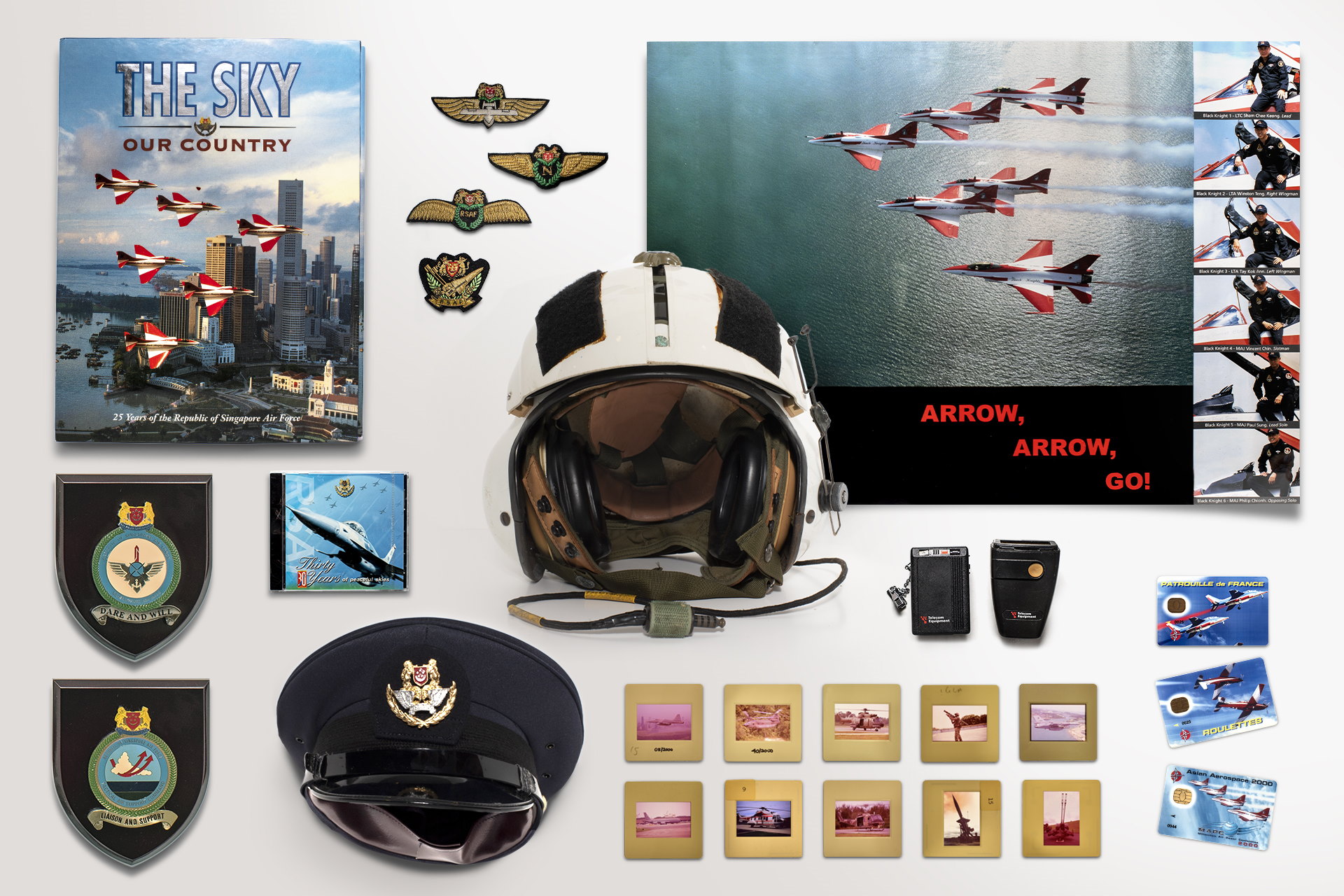JETTING INTO THE RSAF'S PAST
//Story by BENITA TEO //Photos by CHUA SOON LYE
Sealed on 22 Mar 2001, the Air Force Museum Commemorative Time Capsule contained 33 items, carefully selected to mark the Republic of Singapore Air Force's (RSAF's) 33rd anniversary then.
They included Black Knights posters and cash cards from Asian Aerospace 2000; RSAF commemorative books and CD-ROMs; a pilot's helmet; RSAF Formation plaques and slide film featuring photographs of RSAF assets.
Located in the compound of the Air Force Museum, the time capsule commemorated the official opening of the museum back in 2001. It was recently unveiled by Chief of Air Force Major-General (MG) Kelvin Khong and former Chief of Air Force MG (Ret) Raymund Ng on 11 Aug.
Here's a look at some of these nostalgic items!
Pilot Helmet
This United States-made helmet was used by the pilots and aircrew of the RSAF's second-generation helicopters, which included the AS-332 Super Puma, the Bell 212 and the UH-1H.
Both the Bell 212 and UH-1H have since retired from service, while the Super Puma will be progressively replaced by the RSAF's new H225M medium-lift helicopter.
Old SAF Pagers
07734 – do you remember this code? #ifyouknowyouold
To teenagers in the early 1990s, owning this was the pinnacle of cool. But in the RSAF, the humble pager served a very important operational purpose: it was used to activate and call back service personnel when there was an emergency.
In the days before mobile phones, this device was the main mode of contact when one was out and about. RSAF personnel would be activated via such pagers, which would typically show the unit phone number for them to call for information about their mission.
RSAF Vocation Brevets
RSAF personnel used to have different brevets for different uniforms. The colourfully embroidered fabric badges were used on the more formal No. 1 and No. 2 uniforms while the metal badges were meant for everyday use on the No. 3 uniform. Some of these brevets have since changed.
There were also different brevets for different ranks: the officers wore gold wings while non-officers (such as Aircrew Specialists) wore the silver ones. Today, everyone from the RSAF family dons a gold brevet.
Plaques
Before the 3rd Generation transformation, the RSAF was structured according to the air bases. These plaques represent (clockwise from top left) the RSAF; Air Defence Systems Division; Tactical Air Support Command; Air Force School; Paya Lebar Air Base; Sembawang Air Base; Changi Air Base and Tengah Air Base.
Today, the six restructured commands are Air Defence and Operations Command; Air Combat Command; Air Power Generation Command; Participation Command; UAV Command and Air Force Training Command.
Slides of RSAF assets
Look into these slides and you'll feel like you're literally looking back in time. Unlike film negatives, these slide films captured the positives of photographs. To view them, you had to insert them into a slide projector and project them onto a screen.
These slides capture some of the RSAF's early-generation assets, such as the F-5E fighter jet (top row, far left), IGLA Missile System (top row, second from right), UH-1H helicopter (bottom row, centre) and Bloodhound Mark II Surface-to-Air missile (bottom row, second from right).
A trip down memory lane: MG (Ret) Ng (far right) unveiling the items inside the time capsule together with MG Khong (second from left).
With them are former Head Air Manpower Colonel (Ret) Bernard Toh (left), former Chief Warrant Officer of Air Force Senior Warrant Officer (Ret) William Ng (centre) and Air Force Command Chief Military Expert 5 Ng See Lye (second from right).










